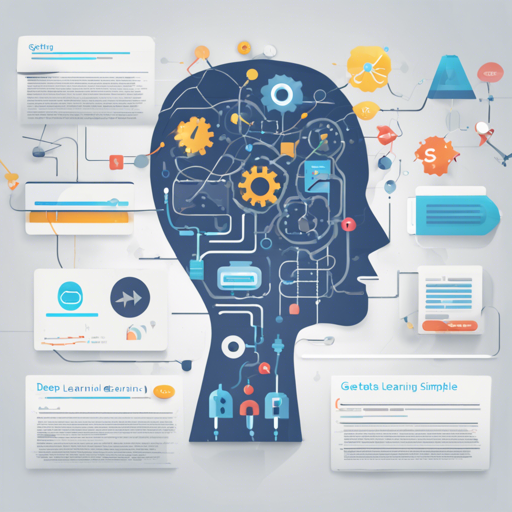Welcome to a world of deep learning with Trax, an end-to-end library developed by the Google Brain team. With its clear code and high-speed performance, Trax makes it effortless to dive into machine learning. In this guide, we’ll walk through the basics of using Trax to set up deep learning models, highlighting key features and common troubleshooting tips.
What is Trax?
Trax is designed to simplify deep learning model development. It serves as a powerful tool, emphasizing straightforward code organization and speed, enabling both beginners and experts to implement sophisticated machine learning solutions. Whether you’re building language translators or classification models, Trax offers the tools you need.
How to Run a Pre-trained Transformer
One of the standout features of Trax is its ability to create a translator using Transformer models in just a few lines of code. It’s akin to setting up a train track; once the foundation is laid, getting from Point A to Point B becomes seamless. Below are the steps to create an English-German translator:
- Create a Transformer model in Trax.
- Initialize it with pre-trained weights.
- Tokenize the input sentence.
- Decode the sentence using the Transformer model.
- De-tokenize to obtain the final translation.
Here’s how the implementation looks:
import os
import numpy as np
import trax
from trax import layers as tl
from trax.supervised import decoding
# Create a Transformer model.
model = trax.models.Transformer(input_vocab_size=33300,
d_model=512,
d_ff=2048,
n_heads=8,
n_encoder_layers=6,
n_decoder_layers=6,
max_len=2048,
mode='predict')
# Initialize using pre-trained weights.
model.init_from_file('gs://trax-ml/models/translation/ende_wmt32k.pkl.gz', weights_only=True)
# Tokenize a sentence.
sentence = "It is nice to learn new things today!"
tokenized = list(trax.data.tokenize(iter([sentence]),
vocab_dir='gs://trax-ml/vocabs',
vocab_file='ende_32k.subword'))[0]
# Decode from the Transformer.
tokenized = tokenized[None, :] # Add batch dimension.
tokenized_translation = decoding.autoregressive_sample(model, tokenized, temperature=0.0)
# De-tokenize the decoded result.
tokenized_translation = tokenized_translation[0][:-1] # Remove batch and EOS.
translation = trax.data.detokenize(tokenized_translation,
vocab_dir='gs://trax-ml/vocabs',
vocab_file='ende_32k.subword')
print(translation) # Output: Es ist schön, heute neue Dinge zu lernen!Explaining the Code with an Analogy
Think of the code above as a recipe to cook a gourmet dish. Each component of the code serves a specific purpose in the cooking process:
- Create the Model: Like gathering ingredients, creating the model sets up the required components for the recipe.
- Initialization: Just as you might preheat your oven, initializing the model with pre-trained weights ensures it starts at an optimal temperature.
- Tokenization: Tokenizing is comparable to chopping vegetables; it breaks down the input into manageable pieces suitable for processing.
- Decoding: Decoding the sentence is akin to cooking; it transforms the raw ingredients into a delicious dish, ready to be served.
- Final Translation: Finally, de-tokenizing is like plating your dish, showcasing the finished product elegantly.
Features and Resources
Trax is packed with features, including:
- Pre-built models like ResNet and LSTM.
- Reinforcement learning algorithms like REINFORCE and PPO.
- Bindings to numerous datasets for training.
For further exploration, check out the API docs and join the community to chat with us.
Troubleshooting
If you encounter issues while using Trax, consider these troubleshooting tips:
- Check whether the libraries are correctly installed and updated.
- Ensure that you’re using the correct data format and paths for models and vocabularies.
- Investigate error messages closely; they often provide clues on misconfigurations.
- If problems persist, consider searching existing issues or opening a new issue.
For more insights, updates, or to collaborate on AI development projects, stay connected with fxis.ai.
Conclusion
At fxis.ai, we believe that such advancements are crucial for the future of AI, as they enable more comprehensive and effective solutions. Our team is continually exploring new methodologies to push the envelope in artificial intelligence, ensuring that our clients benefit from the latest technological innovations.
With this guide, you are now equipped to take your first steps in using Trax to build powerful deep learning models. Happy coding!

